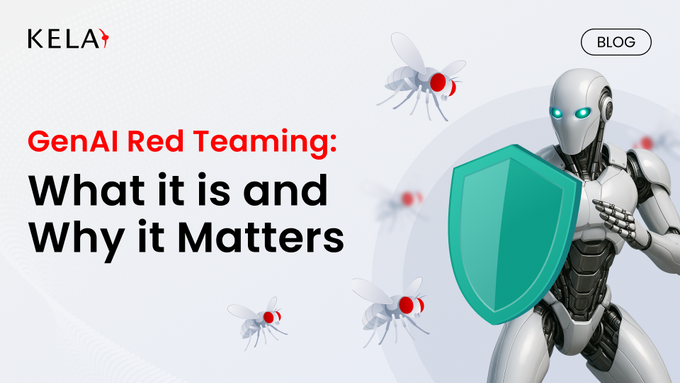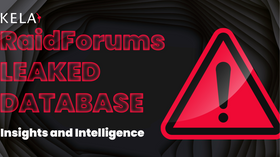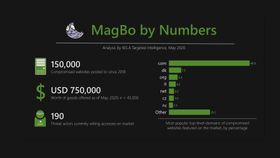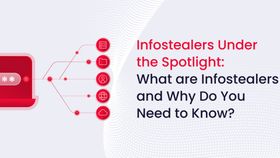GenAI Red Teaming: What it is and Why it Matters
Red teaming generative AI models is an effective ways to find security gaps before attackers do. This blog breaks down what GenAI red teaming involves, how to measure its maturity, and where to start if you don’t have a dedicated red team.
Updated August 25, 2025

The transformative power of generative AI (GenAI) is rapidly reshaping businesses, yet with its immense potential comes a new frontier of risks. If your organization is harnessing GenAI, safeguarding these powerful systems from evolving threats is not just advisable, it's essential. Effective testing of your AI's defenses goes far beyond conventional cybersecurity; it's fundamentally about ensuring user safety, upholding ethical standards, and cementing trust in your cutting-edge technology.
In this blog post, we will look into the critical discipline of GenAI red teaming: what it involves, the practical challenges organizations face, and how you can establish a robust framework to build stronger, more secure, and trustworthy AI systems.
» Ensure your cybersecurity is up to standard with KELA
What Is Generative AI Red Teaming?
GenAI red teaming is a methodology that simulates offensive actions against generative AI systems, such as large language models, to identify security vulnerabilities, testing and validating the protection and reliability of AI systems.
Reasons Gen AI Red Teaming Matters:
- It finds hidden weaknesses in how the AI behaves that might otherwise go unnoticed.
- It prevents the AI from producing harmful or deceptive outputs that could damage users or your reputation.
- It protects sensitive data from being accidentally leaked through the AI’s responses.
- It prepares your AI systems to withstand emerging threats and evolving attack techniques.
» Worried about security? Here are the reasons you need cyber threat intelligence
Gen AI Red Teaming vs. Traditional Red Teaming
| Aspect | Gen AI Red Teaming | Traditional Red Teaming |
|---|---|---|
| Focus Areas | GenAI red teaming incorporates socio-technical risks such as bias or harmful content, in addition to technical vulnerabilities. | Traditional red teaming primarily focuses on identifying technical weaknesses in systems. |
| Security Challenges Addressed | GenAI red teaming targets novel AI-specific security challenges including prompt injection, toxic outputs, model extraction, bias, knowledge risks, and hallucinations. | Traditional red teaming focuses on well-known technical attack vectors and system vulnerabilities. |
| Data Requirements | GenAI red teaming requires curating, generating, and analyzing diverse, large-scale datasets across multiple modalities due to the non-deterministic nature of AI systems. | Traditional red teaming typically involves analyzing deterministic systems with less emphasis on large-scale, multi-modal datasets. |
| Adversary Definition | GenAI red teaming expands the adversary definition to include the AI model itself and the potentially harmful or misleading outputs it generates. | Traditional red teaming generally considers external human adversaries or attackers as the primary threat. |
| Purpose and Outcome | GenAI red teaming simulates adversarial behaviors to test AI security, ethics, and alignment with values. | Traditional red teaming emulates attacker tactics to assess system defenses against real-world threats. |
» Discover how KELA’s Threat Actors Hub can help you uncover your adversaries
How Red Teaming Uncovers Vulnerabilities in Generative AI
1. Simulating Adversarial Attacks
GenAI red teaming begins by simulating adversarial attacks on generative AI systems, especially large language models (LLMs). This initial step involves red teams actively trying to trick models into bypassing safety guidelines.
A common technique employed here is prompt injection, where attackers might manipulate a chatbot to give instructions for illegal activities.
This direct adversarial engagement is crucial. It goes beyond traditional cybersecurity, specifically examining how harmful or deceptive outputs can be generated. This directly uncovers vulnerabilities related to user safety and prevents real-world harm
» Make sure you understand the most targeted entry points by attackers
2. Identifying Security, Safety, and Trust Vulnerabilities
The core purpose of the red teaming process is to identify a broad spectrum of vulnerabilities such as:
- Security flaws
- Safety risks
- Issues that erode trust in the AI system
This comprehensive assessment moves beyond just technical weaknesses to include areas like the generation of harmful or deceptive content. By focusing on these distinct categories, the process helps pinpoint where the AI system might fail—not only in technical exploitation but also in its ethical and reliable operation.
3. Combining Human Expertise and AI Tools
The process leverages a powerful combination of human ingenuity and AI-powered tools.
- Human red teamers bring their creative thinking to devise novel attack strategies.
- AI tools can automate large-scale testing and analysis of model responses.
This synergistic approach allows for the efficient identification of gaps in user safety, operator security, and user/partner trust. For instance, red teams check for data leaks, such as private information or intellectual property. This combined effort is essential for uncovering vulnerabilities that neither human nor automated methods might find alone, ensuring a more thorough and robust assessment of the AI's resilience.
» Make sure you understand the difference between vulnerability, threat, and risk to strengthen your cybersecurity strategy
Steps for Testing Generative AI Security Without a Dedicated Red Team
Not all companies have the cyber maturity or budget to build a dedicated red team, but responsible testing of generative AI safety is still achievable.
- Set clear goals and prioritize: Define testing objectives and focus on your most critical AI applications, especially those dealing with sensitive data or customer interactions. Start small by targeting high-risk areas first.
- Build a cross-functional team: Assemble a diverse team for comprehensive red teaming. This includes AI engineers proficient in model design and vulnerabilities, cybersecurity experts skilled in traditional and AI-specific attacks (like prompt injection and data poisoning), and ethics or compliance staff to ensure responsible testing practices.
- Model realistic attack scenarios: Simulate relevant threats. For example, a chatbot handling personal financial info should be tested against prompts that try to trick it into leaking private data or executing unintended actions.
- Prioritize immediate risks: Focus on common threats like prompt injection and data extraction, especially for externally facing AI tools which carry higher risk.
- Use trusted frameworks: Leverage guidelines from NIST, MITRE ATLAS, and OWASP to structure your testing and prioritize vulnerabilities effectively.
» Make sure you understand how threat actors breach and exploit your data
Challenges and Best Practices in GenAI Red Teaming
Red teaming GenAI models is a complex undertaking, presenting unique hurdles that traditional security assessments simply don't address. Organizations must contend with the distinct characteristics of AI, demanding specialized approaches. Below are the common challenges and best practices for navigating them.
Model Opacity ("Black Box" Problem)
- Challenge: Many AI models, particularly LLMs, operate as "black boxes," making their internal decision-making processes opaque. This opacity makes it challenging to understand why a model produces a specific output, even if it's harmful.
- Best practice: Implement robust logging and monitoring to capture detailed interaction data. Leverage explainable AI (XAI) techniques where possible to gain insights into model behavior, even if full transparency isn't achievable.
Unpredictable and Non-Deterministic Behavior
- Challenge: GenAI models can exhibit highly unpredictable behavior, especially when confronted with unusual inputs or adversarial attacks. Their responses can be non-deterministic, meaning the same prompt might yield different outputs, complicating consistent vulnerability reproduction.
- Best practice: Utilize scenario-based testing to simulate diverse real-world conditions and edge cases. Employ automated testing tools alongside human expertise to efficiently identify and categorize unexpected behaviors across numerous iterations.
Novel and Evolving Vulnerabilities
- Challenge: GenAI introduces entirely new attack vectors like prompt injection, where attackers manipulate models into bypassing safety guidelines. Other unique risks include harmful content generation, data leakage, and model extraction. The threat landscape is constantly evolving.
- Best practice: Adopt an "Intelligence-Driven" approach to continuously monitor emerging threats and attack techniques specific to GenAI. Regularly update red teaming methodologies to incorporate the latest adversarial tactics, ensuring proactive defense against new vulnerabilities.
» Learn about the difference between red team and blue teams in cybersecurity
Key Metrics for Measuring Maturity
Organizations can gauge the maturity of their GenAI red teaming by tracking several key metrics. These metrics help quantify the program's effectiveness and its overall reach within the organization.
- Testing coverage and frequency: Look at how often tests happen each week and the specific topics they cover, like bias or prompt injection. The number of different inputs and queries checked for weaknesses also shows how thorough the testing is.
- Protection effectiveness: Maturity shows in how well the system’s defenses work. This means checking how the AI responds to both normal and harmful inputs. Keeping track of how many protections are put in place based on red team findings helps measure the program’s success.
- Model coverage: A mature program tests many different AI models. It regularly evaluates a variety of generative AI systems to make sure they are all thoroughly assessed.
» Now that you understand why GenAI red teaming matters, discover how a threat intelligence analyst can help you stay ahead of emerging risks
Strengthen Your GenAI Red Teaming With KELA Cyber
At KELA Cyber, we understand the evolving threats targeting generative AI models, especially LLMs. Our intelligence-driven approach to GenAI red teaming focuses on uncovering emerging risks that others might miss. We work closely with your business to identify vulnerabilities before they become real problems, helping you stay ahead of cybercriminals trying to exploit your AI.
With our expertise, you gain a partner dedicated to making your AI systems safer and more trustworthy. If you’re ready to improve your GenAI red teaming efforts, KELA Cyber is here to support you every step of the way.
» Get started for free with KELA and stay ahead in cybersecurity





